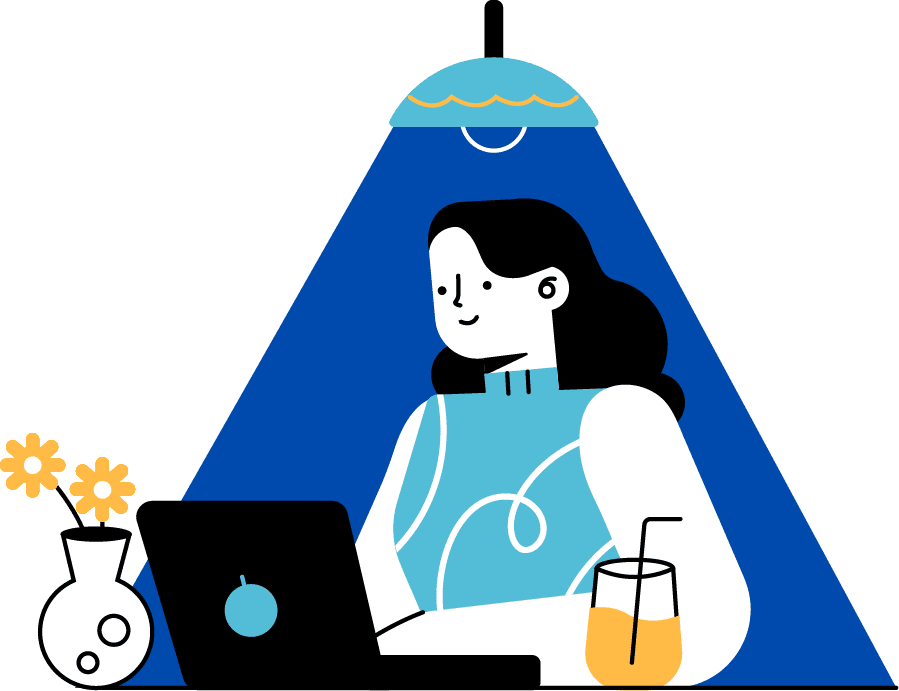Almost 3% of people in the general population are affected by seasonal affective disorder (SAD). Many people don’t understand what this disorder entails, or if they can get help from a mental health professional. More than just the winter blues, seasonal depression is a type of depressive disorder that occurs each year at the same time. And, although it may often be less severe than other major depressive disorders, the compounding effects of seasonal affective disorder can impact a person’s mental health in a significant way.
What Exactly Is Seasonal Affective Disorder?
Seasonal affective disorder is a form of depression that usually begins in late fall or early winter and ends in spring or early summer. While it may not be as disabling as other forms of depression, SAD can cause serious psychological distress if left untreated. Symptoms of SAD might include:
- Feeling depressed most of the day, nearly every day
- Losing interest in activities that you usually enjoy
- Having low energy and feeling sluggish
- Experiencing changes in appetite or weight
- Having difficulty concentrating or remembering things
- Feeling hopeless, worthless, or guilty
The difference between seasonal affective disorder and regular depression is that the symptoms of SAD are related to changes in seasons or weather. It’s not uncommon for people with SAD to experience a decrease in energy and an increase in fatigue during certain times of the year.
What Causes Seasonal Affective Disorder?
While the exact cause of seasonal affective disorder and seasonal depression is not known, it is believed to be linked to a decrease in the production of serotonin, a chemical in the brain that regulates mood. Lower levels of sunlight during winter can also disrupt the body’s internal clock, resulting in fatigue and depression. Since the winter sunrise typically occurs earlier in the day and sets later, sleep patterns might be disrupted and lead to SAD.
Other possible factors include:
- Increased melatonin: Melatonin is a hormone that helps regulate the body’s sleep-wake cycle. During winter, melatonin production increases and can lead to fatigue and depression.
- Circadian rhythm disruption: The body’s circadian rhythm (or internal clock) regulates when we feel most alert and tired during the day. Disruptions in this rhythm can cause feelings of depression due to lack of natural outdoor light during the winter.
- Decreased Vitamin D: Vitamin D is a vitamin that helps regulate the body’s calcium and phosphorus levels, which are necessary for healthy bone growth and immune functioning. Decreased sunlight exposure in winter can lead to lower vitamin D levels, which has been linked to SAD.
In addition to these risk factors, there are other factors that might lead to people developing clinical depression. Such factors include family history, major life changes, and chronic stress. If you suffer from seasonal symptoms and depression, these factors might impact your overall mental health.
How To Tell the Difference Between SAD and Major Depression
The main difference between SAD and regular depression is the timing of symptoms. Symptoms of SAD generally appear in late fall or early winter and disappear in late spring or early summer.
In contrast, regular depression does not follow a seasonal pattern, meaning that it can occur at any time of the year. Other differences include:
- SAD typically causes feelings of lethargy and low energy
- Regular depression usually causes feelings of guilt or worthlessness
- SAD tends to be more responsive to light therapy than regular depression
- The treatment for SAD is different from the treatment for regular depression. For example, some people with SAD are prescribed antidepressants, while others may benefit from light therapy or psychotherapy.
If you think you may have seasonal affective disorder, it’s vital to seek help from a mental health professional. In addition, if you feel you might be suffering from clinical depression, it is important to seek professional help and support.
Remember, you are not alone in this and there are resources available to help you manage your symptoms for both SAD and major depressive disorder.
In addition to depression and SAD, there are other mental health conditions that might lead to mood changes and related symptoms. For example, bipolar disorder, which is a form of depression characterized by extreme mood swings, and anxiety disorders, which can lead to excessive worrying or fear.
If you think you might be suffering from any of these conditions, it is important to seek help from a qualified mental health professional.
How to Treat SAD
Treatment for SAD is similar to that of regular depression and involves some combination of medication, therapy, and lifestyle changes. In addition, light therapy might also be revolutionizing the way people with SAD manage their symptoms.
What is Light Therapy?
Light therapy involves sitting in front of a light box for 30 minutes to an hour each day, usually first thing in the morning. The bright light that emits from the light box mimics natural outdoor lighting and helps regulate your internal clock and improve mood.
There are also many light therapy devices you can use, such as a dawn simulator or computerized light visor. These miniature light therapy devices emit bright, adjustable light that’s designed to reduce the symptoms of SAD.
It’s always best to check with your doctor before starting light therapy. They can help you figure out the best type of device and intensity to use based on your individual needs. For instance, if you struggle with sleep, they might recommend using a dawn simulator or another treatment option.
If you do not wish to undergo bright light therapy in a clinical setting, many mental health professionals recommend subjecting yourself to natural outdoor light shortly after waking up. This can help fight seasonal depression amid the waning winter daylight hours.
Medication
Medication can also help manage depressive symptoms associated with SAD. Antidepressants, such as selective serotonin reuptake inhibitors (SSRIs), can be prescribed to help regulate the production of serotonin in the brain and reduce depressive symptoms. Such medications should be taken under the supervision of a doctor and can take several weeks before they start to work. These medications include:
- Citalopram (Celexa)
- Escitalopram (Lexapro)
- Fluoxetine (Prozac)
- Paroxetine (Paxil)
- Sertraline (Zoloft)
While they might help you get through the most difficult period of SAD, it’s important to note that antidepressants might not be a permanent solution. Speak to your doctor to determine the best treatment plan for you.
Therapy
In addition to light therapy and medication, psychotherapy, or talk therapy can also help manage symptoms of SAD. Cognitive behavioral therapy (CBT) is an effective type of therapy that focuses on changing negative thought patterns and behaviors associated with depression. It can help individuals identify and challenge any distorted thinking patterns that are contributing to their SAD symptoms.
Other types of therapy that can help if you’re struggling with seasonal affective disorder (SAD), major depressive disorder, or bipolar disorder include interpersonal therapy, psychodynamic therapy, and dialectical behavior therapy.
Get Regular Exercise
Exercise helps to reduce stress and anxiety, improve sleep and mood, boost self-esteem, and increase energy levels. It’s important to try to get at least 30 minutes of moderate-intensity activity most days of the week if you are dealing with depression or SAD.
During the winter, there are many activities you can do to stay active, such as yoga, walking, or jogging. You can also find online classes and outdoor group activities in your area.
Practice Self-Care
Self-care is an important component of managing depression and SAD. It’s important to make time for yourself and do something that makes you feel better. For instance, try and spend as much time outdoors so you can get natural bright light exposure. Other self-care activities you can do include getting a massage or bodywork treatments, journaling, and practicing mindfulness.
Vitamin D Supplements
Evidence suggests that Vitamin D deficiency can contribute to SAD symptoms. Vitamin D is a nutrient that helps regulate mood, energy levels, and immune function. It’s important to talk to your doctor before taking any supplements as they can interact with other medications you are taking or cause more harm than good.
If you’re cleared to take a vitamin D supplement, it’s important to find the right dosage for you. Your doctor will be able to recommend the best dosage based on your characteristics.
Regular Sleep Schedules
Getting enough sleep is essential for good mental health. Sleep helps to regulate hormones and brain chemicals that are linked to mood and stress levels. It’s best to establish a regular sleep schedule and strive for 7–9 hours of sleep each night.
Try to go to bed and wake up at the same time every day, even on weekends and holidays. Reduce your caffeine and alcohol intake in the evening and avoid screens, such as phones, tablets, or TVs before bed. If you’re having trouble falling asleep or staying asleep, speak to your doctor who might recommend a sleep aid.
Get Help For SAD And Improve Your Quality of Life
Seasonal affective disorder is a serious and debilitating condition that can have a major impact on quality of life. While the exact cause of SAD is still unknown, it is believed to be linked to changes in the body’s chemistry and decreased sunlight exposure during winter months. The key to managing SAD is to recognize the symptoms and seek treatment as soon as possible. With the right combination of lifestyle modifications, therapy, and medication, people with SAD can get relief from their symptoms and live a full and healthy life.
At Clear Behavioral Health’s Virtual IOP for SAD and depression, we’re proud to provide evidence-based treatment to help those suffering from SAD and other forms of depression. Our compassionate and experienced team is here to support you on your journey to recovery and improved mental health. With our virtual and in-person options, we can help you get the care and support you need. If none of the above suggestions are working, consider seeking help from a mental health professional at CRC.






